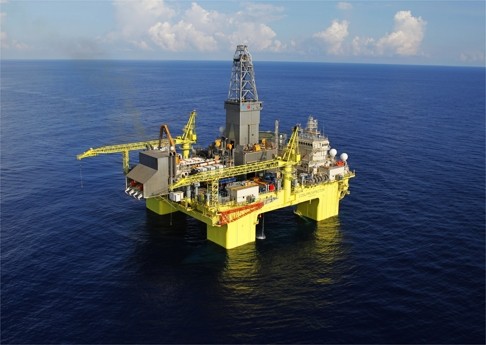
New | China Oilfield Services faces tough 2016 amid continuing oil slump, cuts to customer’s exploration budgets
Exploration budget cuts by CNOOC are expected to negatively impact sister company Cosl
China Oilfield Services (Cosl) is expected to have another tough year ahead after its biggest customer CNOOC said it would slash its project spending for 2016 by at least 10.7 per cent.
Some analysts said that given the sharp plunge in oil prices so far this year amid wider global financial markets turbulence, CNOOC may cut its spending even more than its guidance suggests.
“CNOOC announced to cut its capital expenditure budget of at least 10 per cent this year after a 37 per cent fall last year,” said Barclays’ analysts in a note. “With [the] Brent [oil benchmark] sliding below US$30 per barrel, CNOOC may spend even less.”

It is less than the estimated 67.2 billion yuan actually spent last year, which in turn was less than its own projection of 70 to 80 billion yuan for 2015 announced a year ago.
Chief executive Li Fanrong told reporters that CNOOC has cut the number of so-called infill wells drilled last year as part of its cost reduction effort, which has a “relatively large” impact on reducing future output.
This is because additional output from new wells would be unable to make up for natural output declines at existing wells as they mature, he added.
This is part of the reason for CNOOC’s decision to cut this year’s output target by 4.7 to 7.7 per cent from the level it projected a year ago, and slash that for next year by 5.7 per cent. A shutdown of its Long Lake oil sands project in Canada after a fatal explosion also contributed to the cutback.
“There is no good news in here for Cosl,” said American brokerage Sanford Bernstein senior analyst Neil Beveridge said of the impact of CNOOC’s cutbacks.
Barclays’ analysts said Cosl faces an even grimmer prospect outside China.
“A tougher job facing Cosl is to deploy its idled rigs in international markets,” they said. “Southeast Asia was a key market, but there utilisation has dropped to 55 per cent and United States competitors are cutting costs aggressively.”
They estimated that a third of Cosl’s drilling rigs will be without customers by mid-year, with the daily rates it is expected to be able to charge its customers on its jack-up rigs in Asia to fall 25 to 30 per cent this year.
Existing contracts for jack-up rigs deployed in Iran and Mexico and semi-submersible rigs in Norway are also exposed to risks that their much higher than current market drilling rates may be renegotiated, if customers tighten cost controls amid the oil price slump, they added.
Barclays’ analysts said the industry downturn could be “more structural and longer” than previously expected, as a survey they have conducted on international oil and gas producers suggested they intend to cut offshore spending by 20 to 25 per cent and avoid starting high-cost deepwater projects that take years before revenues are reaped.
“The offshore rig markets could be over-supplied for two to three years … [drilling] rates may fall to cash [operating] cost levels as competition intensifies,” they added.
Cosl’s share price has fallen 63 per cent in the past 12 months and closed Wednesday at HK$4.9 and at 13.17 yuan in Shanghai.
Its net profit plunged 82 per cent year-on-year in last year’s first nine months to 1.13 billion yuan as revenue fell 27.5 per cent to 18 billion yuan. Barclays forecast its net profit to drop 92 per cent this year to 120 million yuan from last year.

